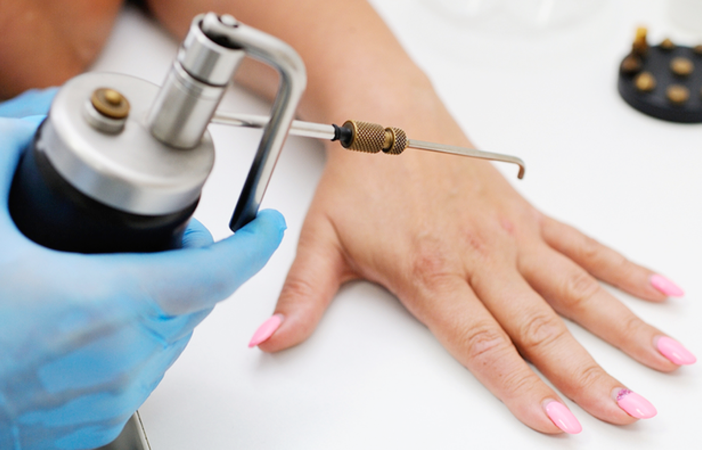What is cryosurgery?
It is the use of a freezing substance to treat such skin conditions as:
• Actinic keratosis (a sun-induced lesion)
• Molluscum contagiosum (a round lesion caused by a pox virus)
• Seborrheic keratosis (a brown mark, sometimes called an age or liver spot)
• Verruca vulgaris (a wart caused by the papilloma virus)

How cold is liquid nitrogen?
Liquid nitrogen is a liquid under pressure and has a below freezing temperature of:
• -196o Centigrade
• -321o Fahrenheit
At room temperature, it is a gas. It does not explode.
Does cryosurgery hurt?
It causes stinging for a few minutes. The sensation from cryosurgery is akin to stepping into a bathtub with very hot water. It is so cold that it burns.
How does cryosurgery work?
Freezing makes the walls of the blood vessels stick together so that there are no nutrients going to the treated area. The treated area may turn red for several minutes and looks like a mosquito bite, often for a week, when the treated skin just peels off.
What about blistering?
Sometimes, a blister can form. This is normal. There is no need to break the blister, but if it breaks, that is okay, too. Typically, with a blister, crusting may develop that lasts for several days.
What about scarring?
Cryosurgery almost never causes scarring. The treated lesion may not disappear entirely, so the area may need to be treated again.
The surrounding skin may become lighter or darker. The normal color of the skin generally returns over time.
Is the treated site infected?
This is most unlikely, as the freezing destroys the bacteria, even the local normal flora.
Does cryosurgery remove the treated lesion permanently?
Not all the time, for the very reason that the lesion developed in the first place. In the case of a wart, for example, the virus remains in the skin permanently, and surfaces occasionally for unknown reasons. If the sun had caused the lesion, there is still exposure to sunlight.
Author: Parish Dermatology
